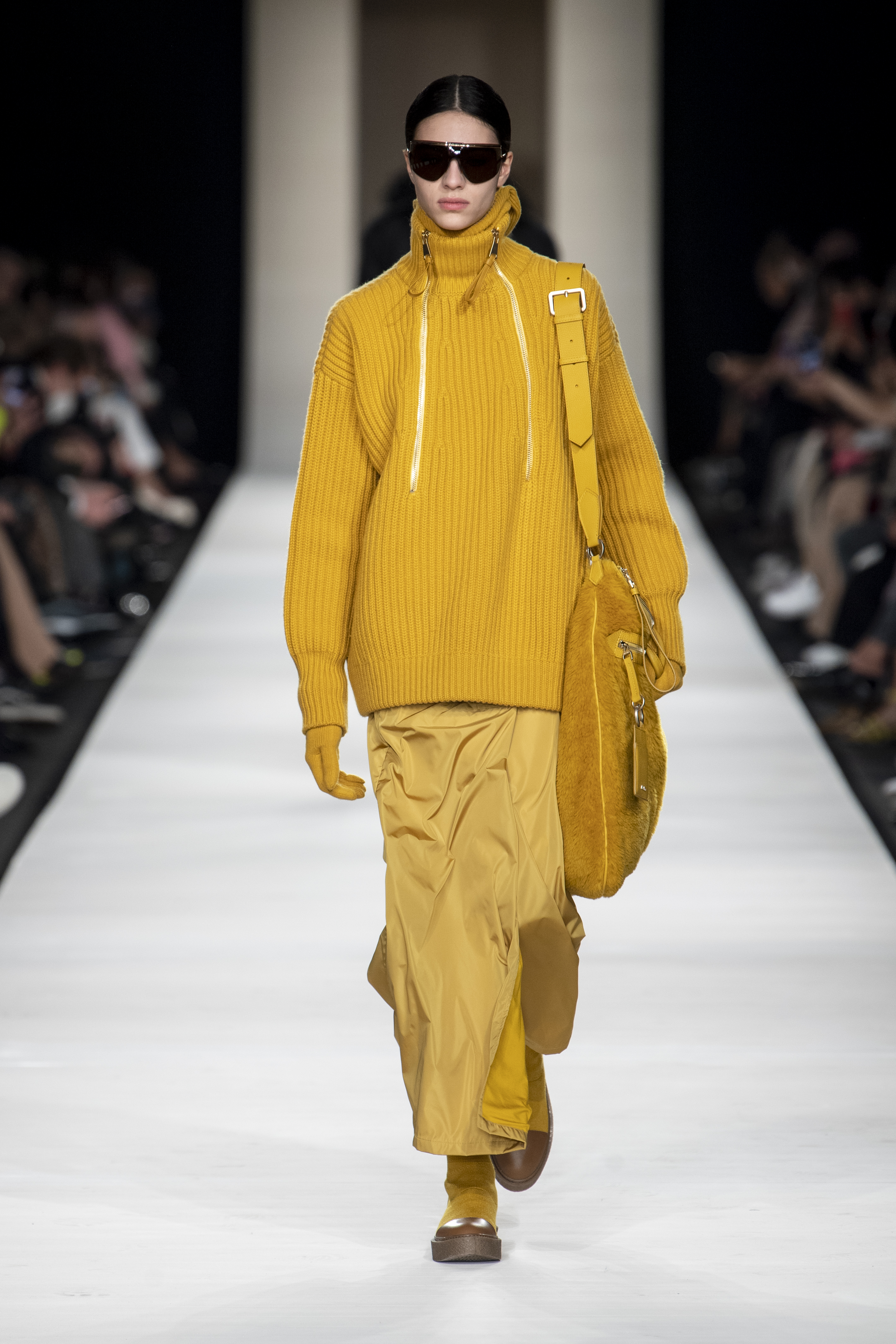News feed
Max Mara’s long-serving creative director Ian Griffiths is a sucker for a good reference. In the last few years his inspiration points have spanned the French writer Françoise Sagan, through to the glittering ‘20s heyday of Weimar Berlin. As a fashion writer, you inevitably feel more cultured every time you leave one of his shows. This season, he shone the light on the Swiss artist, architect, and general polymath Sophie Taeuber-Arp. An avant-garde artist born at the turn of the 20th century, Taeuber-Arp was part of a collective of artists including Wassily Kandinsky, Guillaume Apollinaire, and Max Ernst, who went on to create the Dadaist movement.
Griffiths was particularly inspired by the marionettes, costumes, and stage sets Taeuber-Arp designed for an 1918 adaptation of the play King Stag. With a focus on geometric shapes, the collection’s notes refer to them as “fully formed fairytale characters with a charm that lies somewhere between the robotic and the animal.” Those shapes were referenced in FW ’22, where Griffiths experimented with silhouettes while still remaining true to the signature fabrics and colour palettes of the Max Mara universe. Floor skimming voluminous ‘cocoon’ skirts were unexpectedly finished in the quintessential Max Mara ‘teddy bear’ fabric, as were mini skirts, day dresses and even sweatpants (though they’re the chicest pair of sweatpants you’re ever set to encounter).

Elsewhere, quilted gilets were oversized and fell all the way to the ankle, or turned into surprisingly evening-appropriate ‘puffer gowns’ with playful side zips (it’s camping at Glastonbury-turned-chic). The colour palette was a sophisticated swathe of camels, blacks, navys, and greys, with welcome bursts of vibrant yellow and cherry red. Geometric prints—some of the more overt references to Taeuber-Arp and her work—were found on sleeveless knits and oversized sweaters. The soft woolen balaclavas and snoods were a subtler nod, referencing the Swiss Alps, near where the artist was born.
The influence of the Dadaists proved unexpectedly profound. The Max Mara show coincided with the terrible news that Russia had invaded Ukraine, sparking concerns of a ground war in Europe for the first time in more than 80 years. The Dadaists emerged in the years after the devastation of the First World War, their goal being, in part, to reveal the absurdity of war through art. Keeping their legacy alive doesn’t just make for beautiful creative expression—it’s essential to ensure history doesn’t repeat itself.











